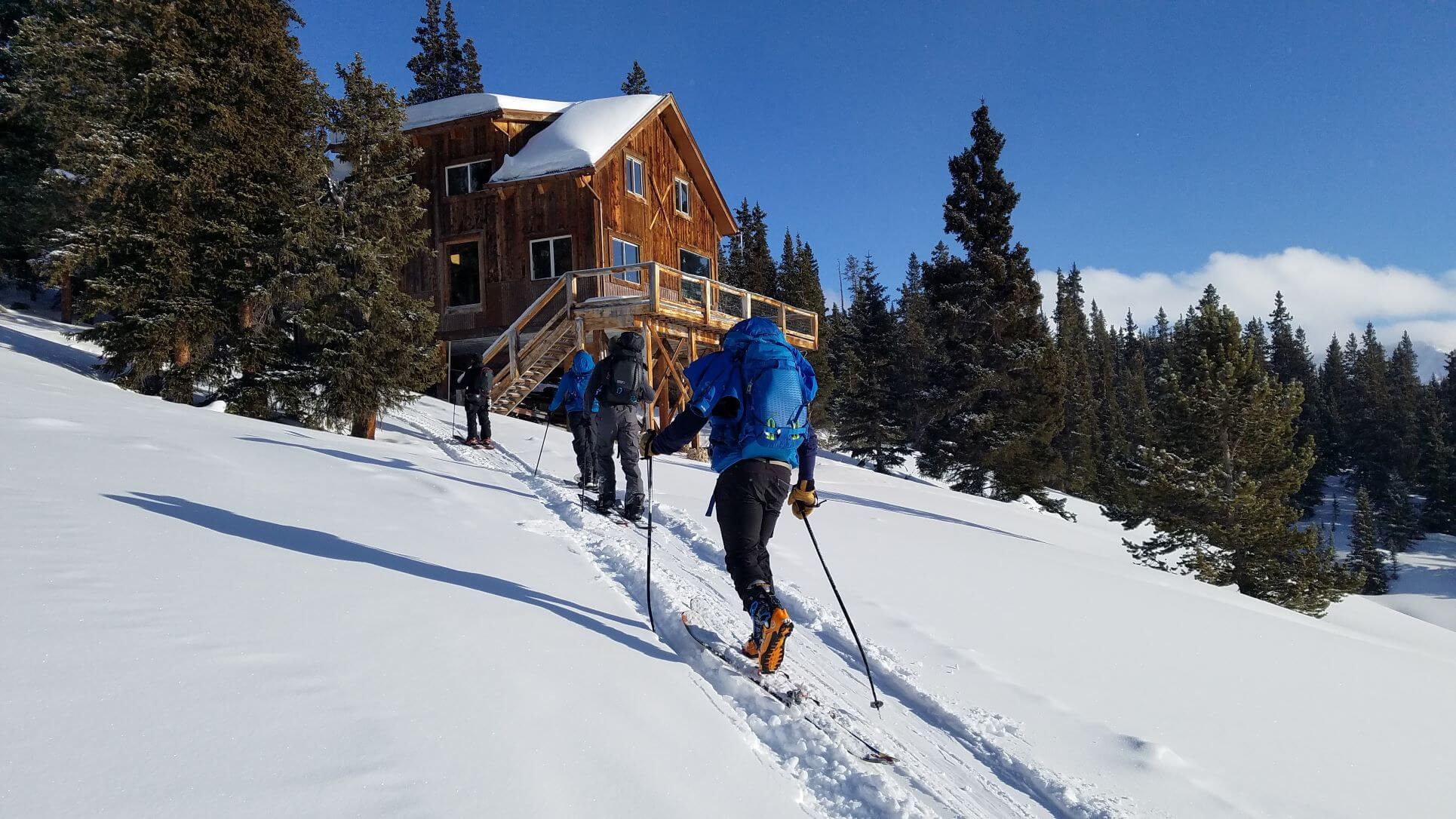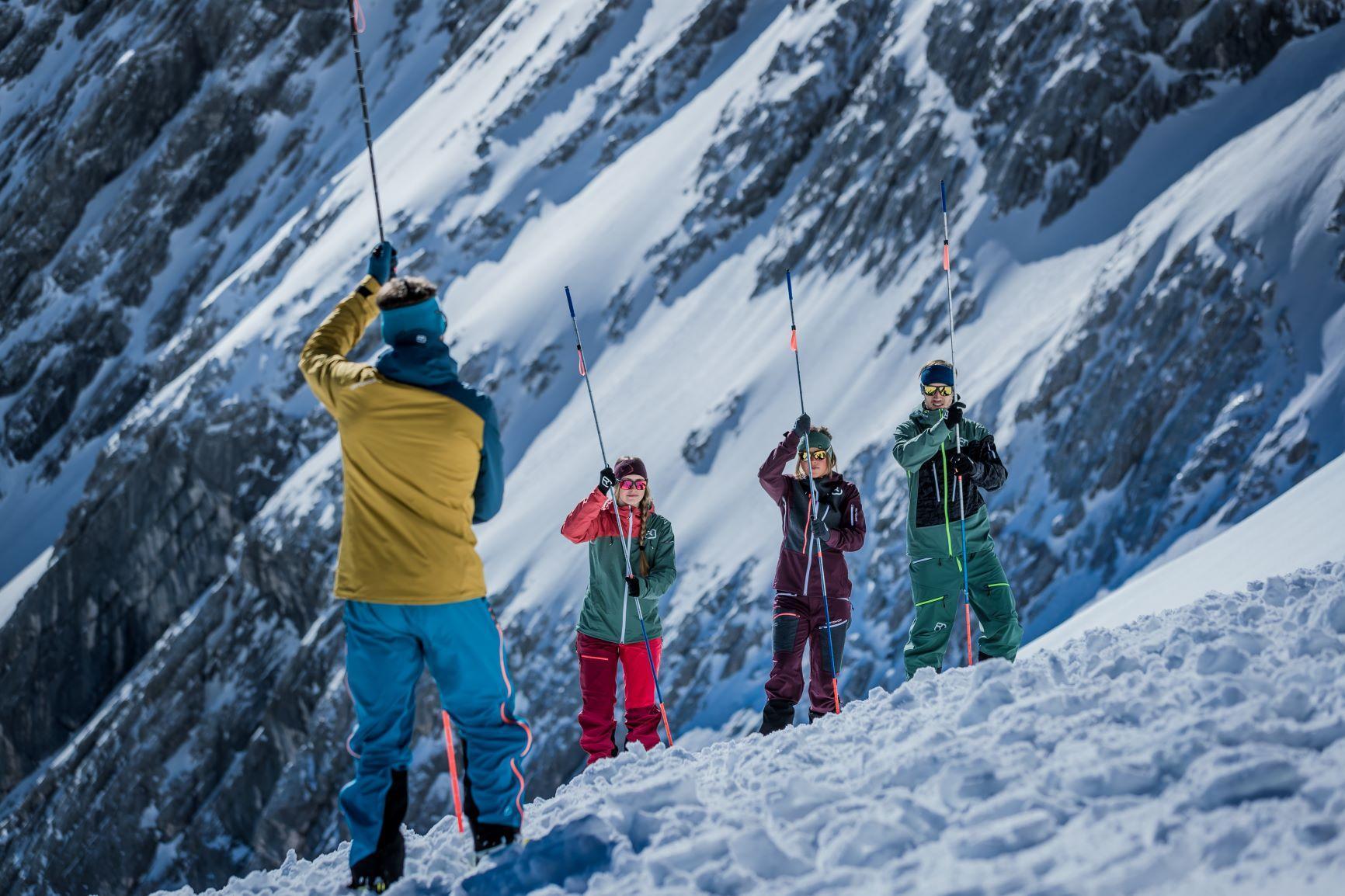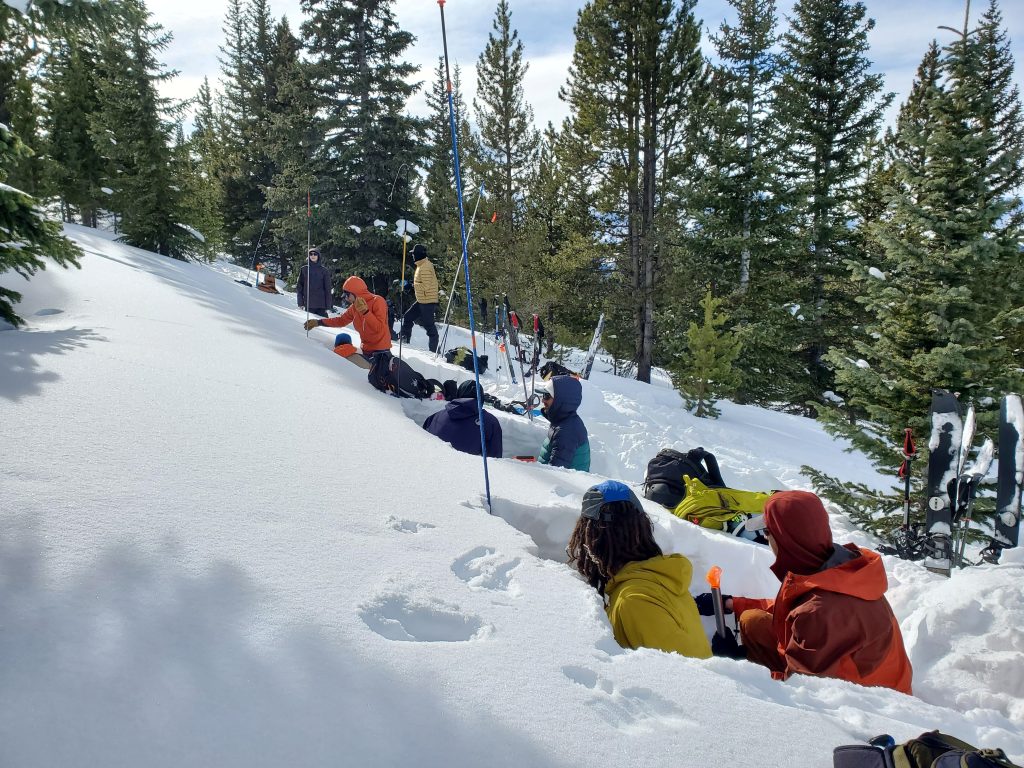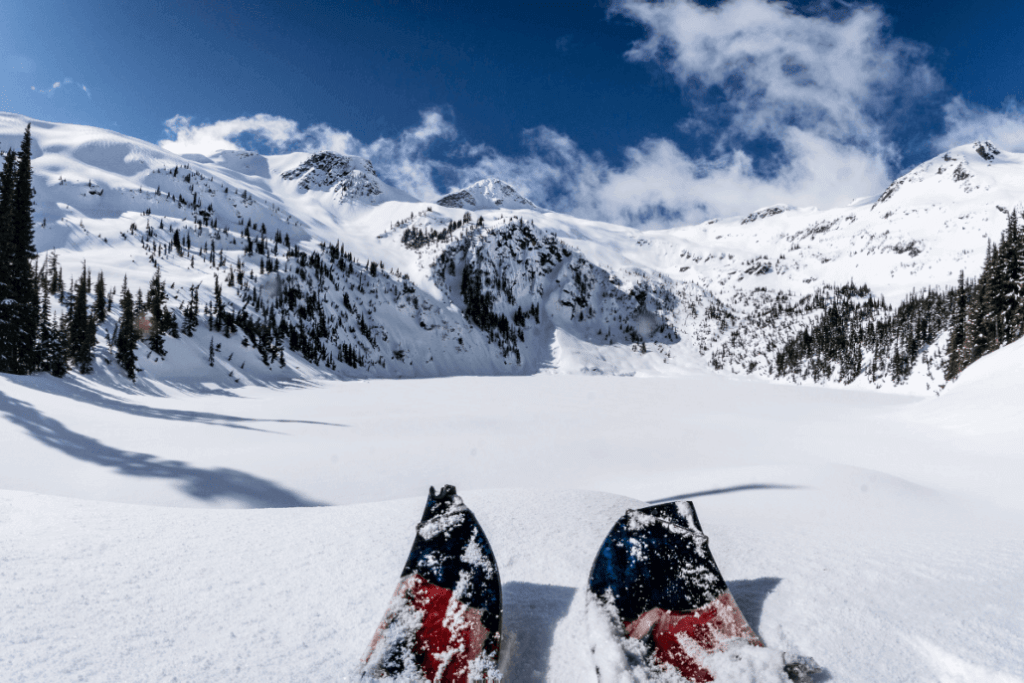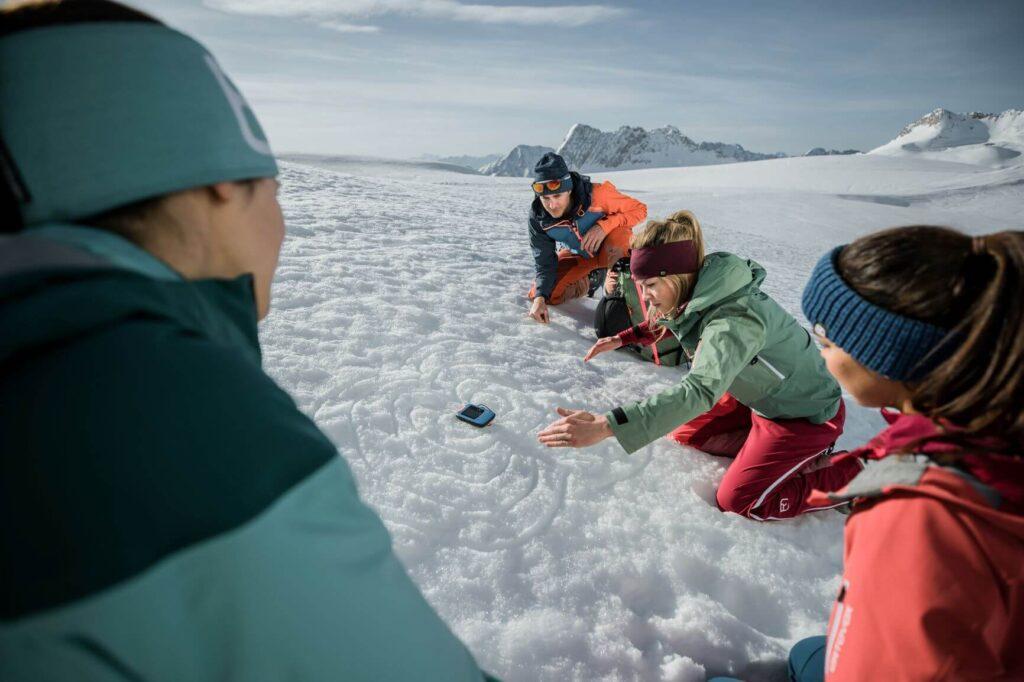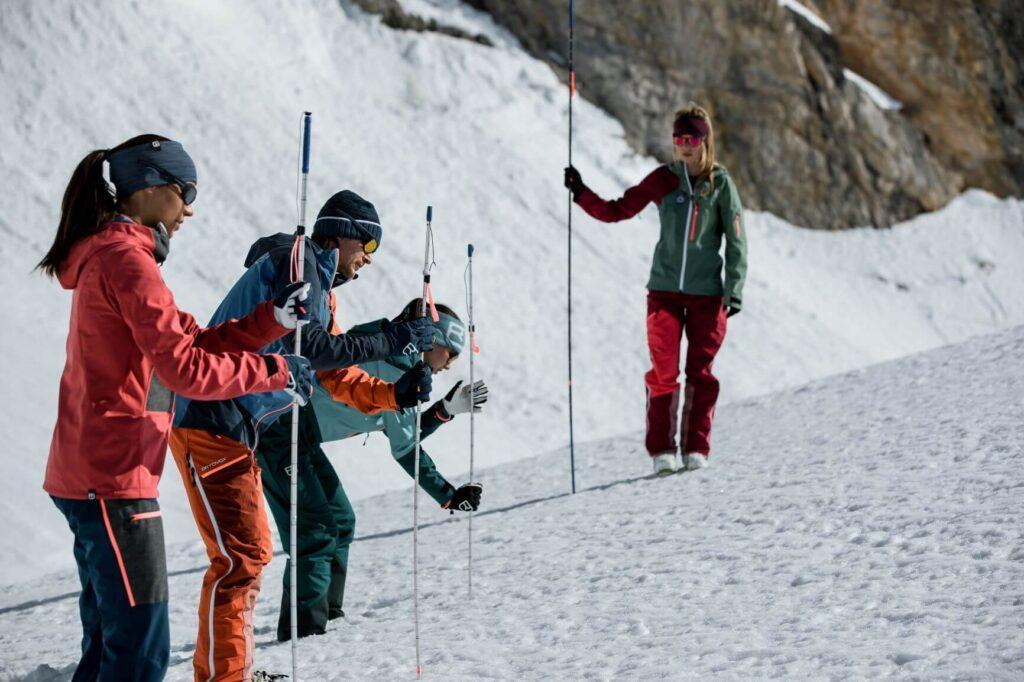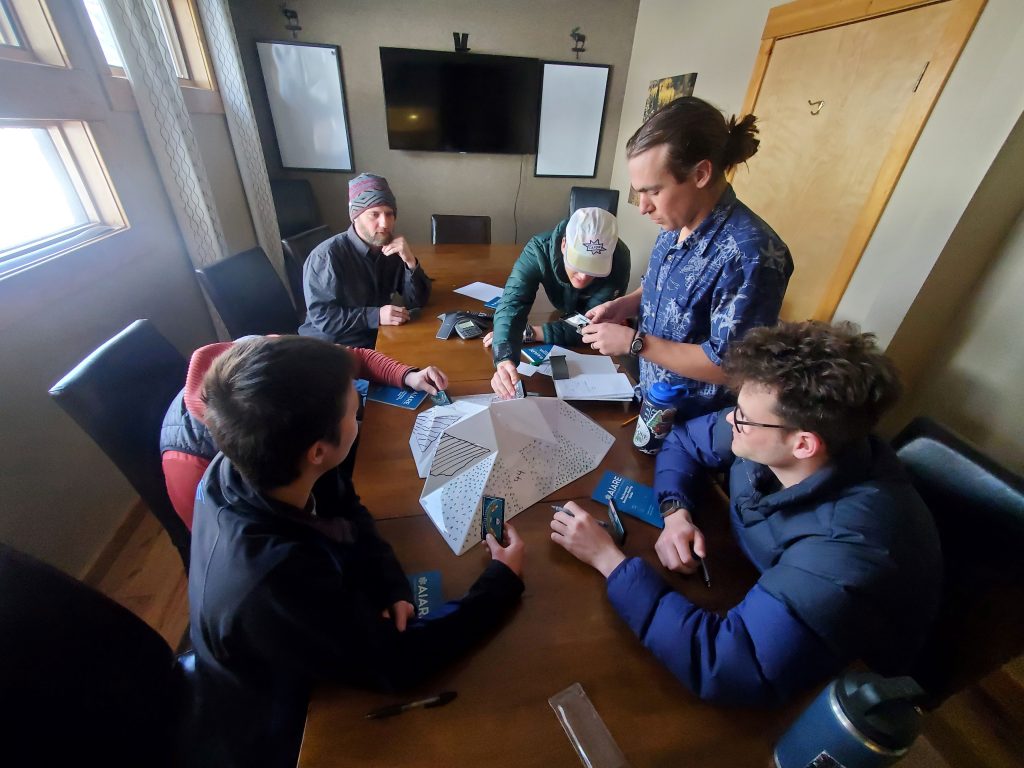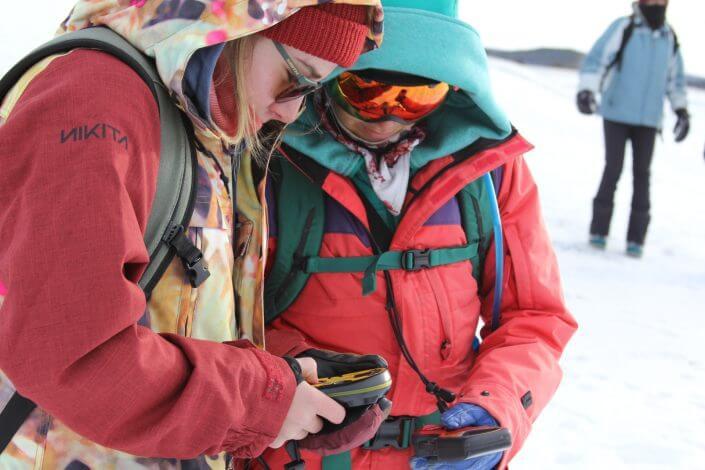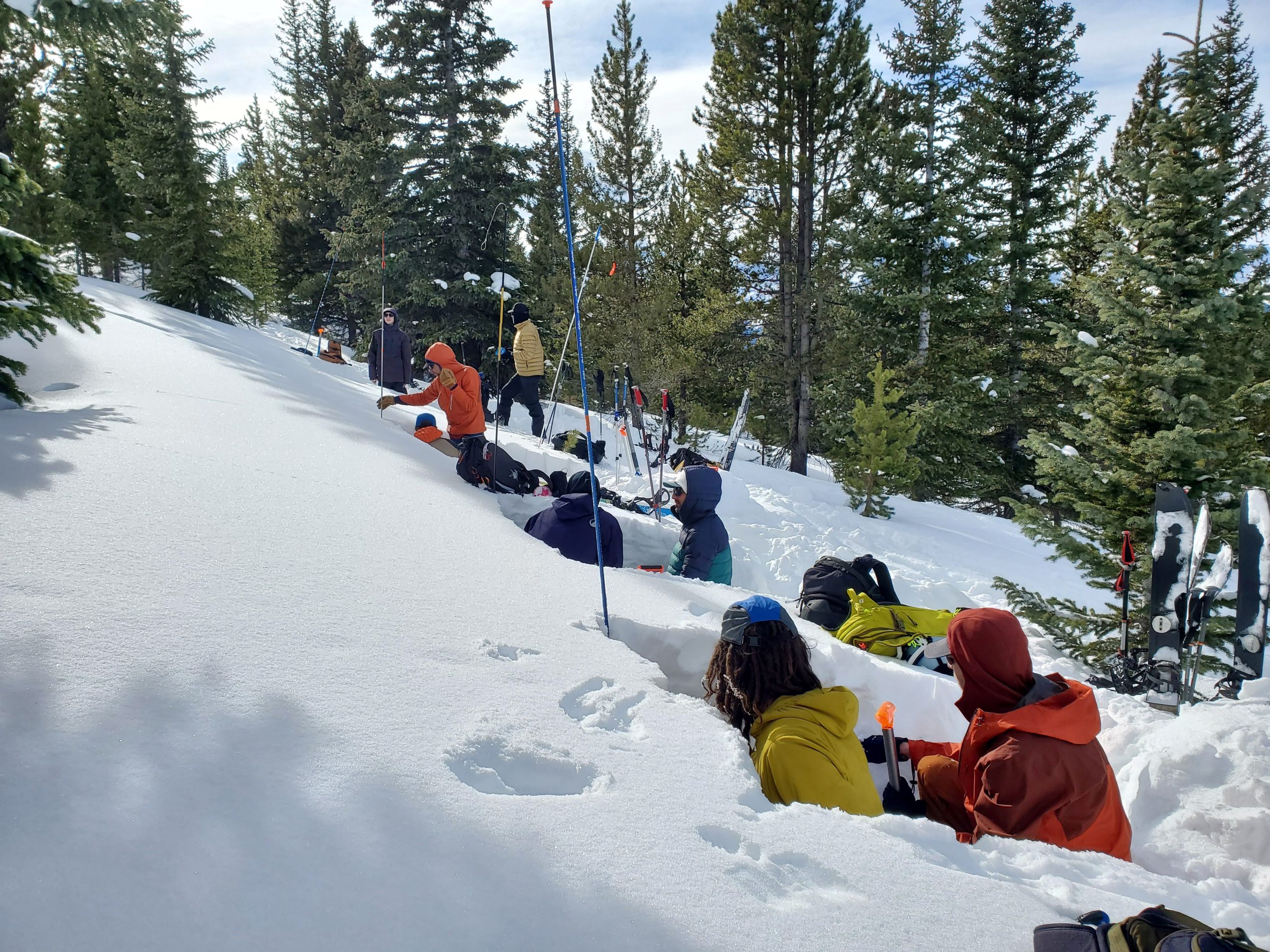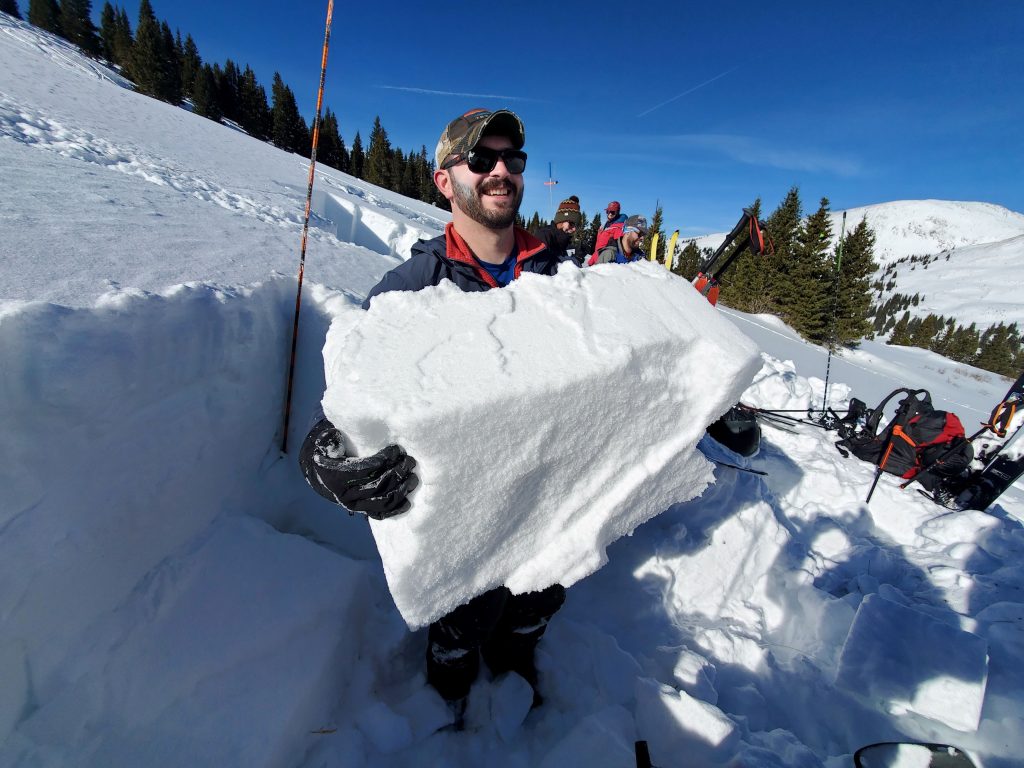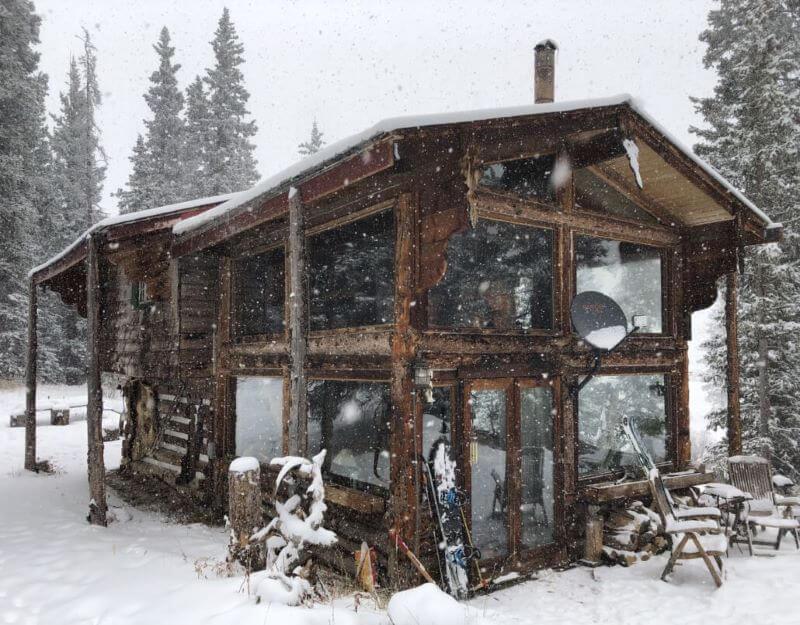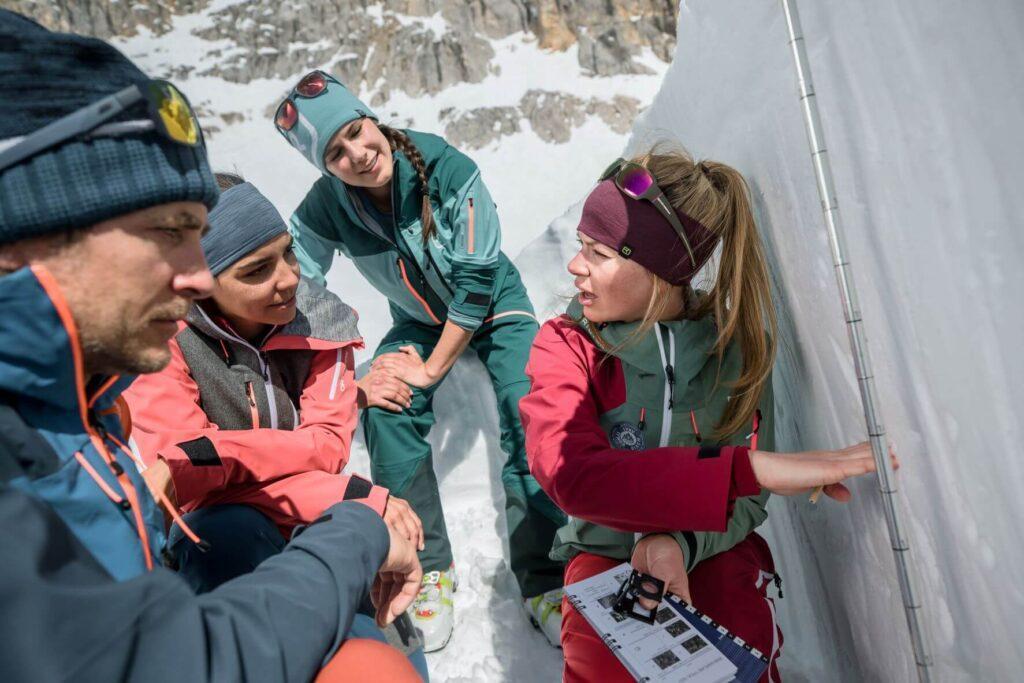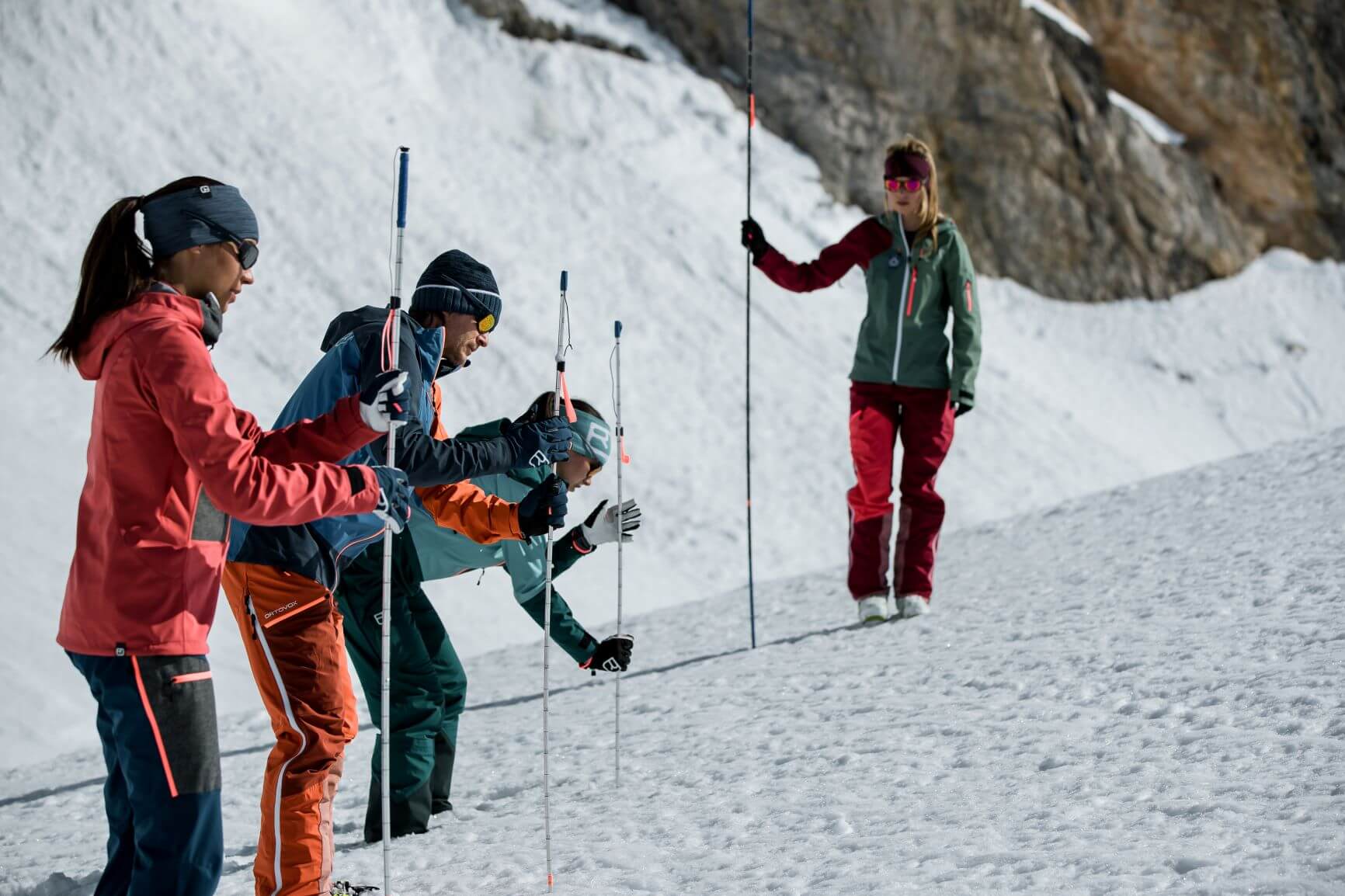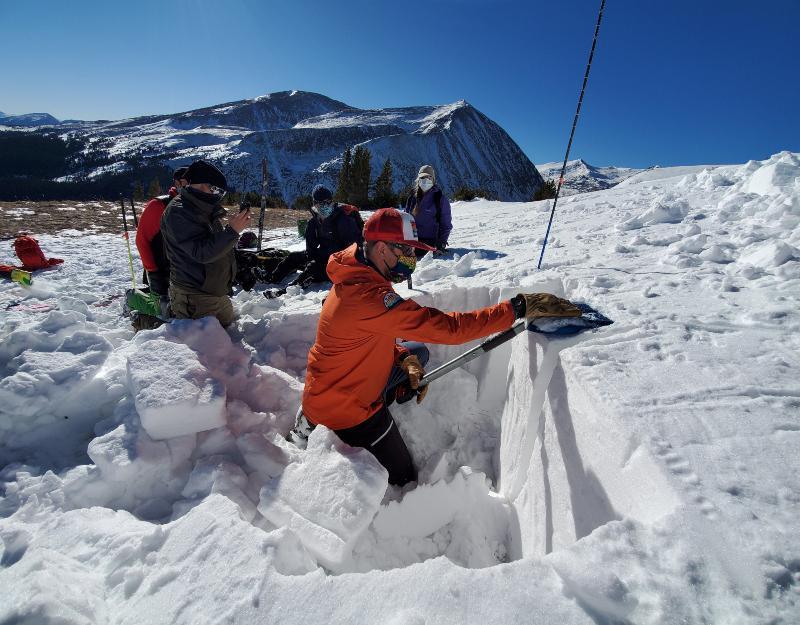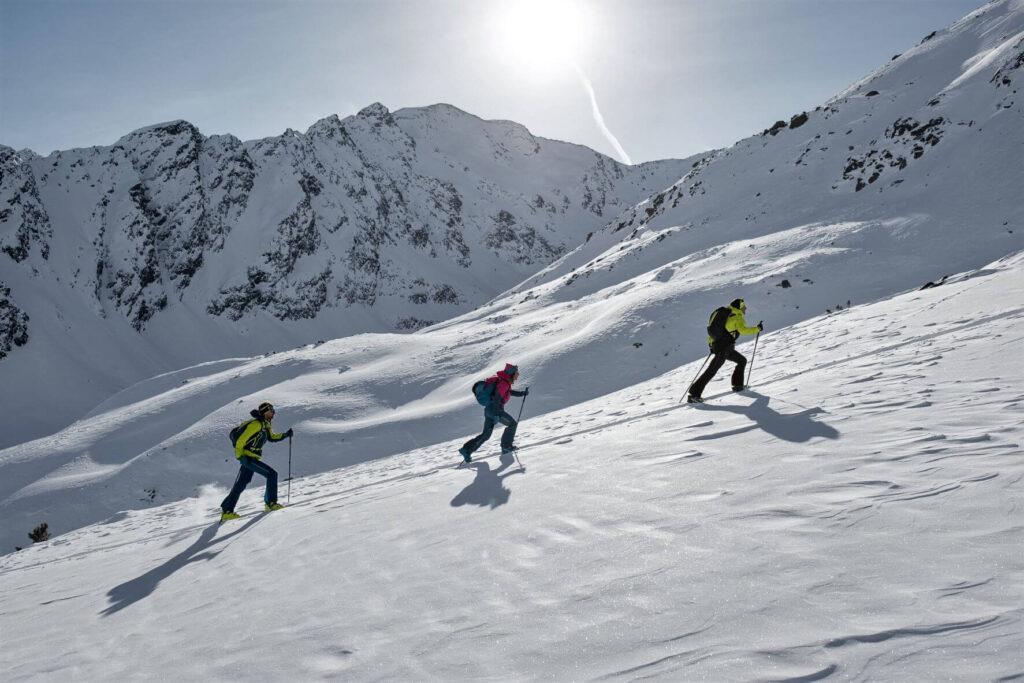9 Backcountry Huts in Colorado
Colorado Backcountry Hut Information
Backcountry Hut Activities, Courses, & Guided Trips
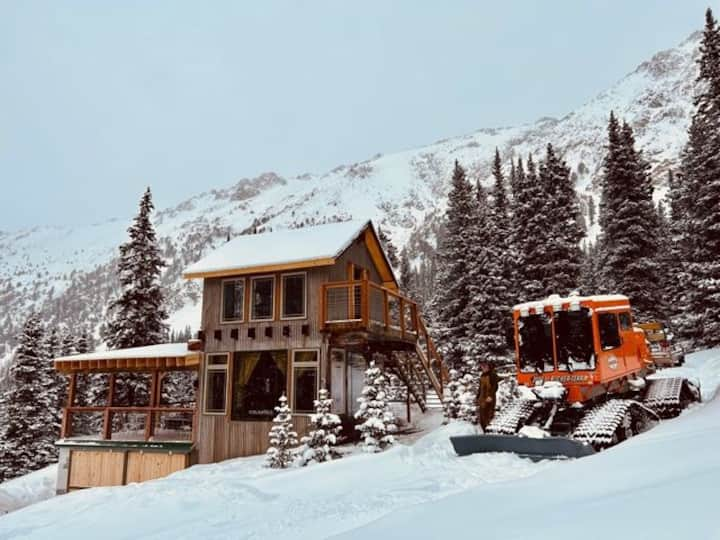
Hut trips are the quintessential Colorado experience for mountain adventurers of all skill levels. It is possible that you and your family can enjoy a weekend of guided skiing, snowshoeing, or riding, and then relax in the evenings with no tech. Many huts sit near avalanche terrain, but if your touring crew is ready to get serious about avalanche safety, you can organize a private AIARE course and learn inside and outside the hut, while riding some fresh powder, too. Colorado’s backcountry huts allow all this and more, but they can be really hard for private individuals to book. Here are the activities we recommend for each hut or cabin we operate in.
1. Ice Climb and Backcountry Ski at Carner’s Cabin
Location: Fremont Pass
Difficulty: moderate.
Capacity: 8
Description/Activities: Surrounded by the San Isabel National Forest, hut guests can access incredible backcountry skiing and ice climbing from this hut! We provide climbing gear. Also possible, AIARE avalanche ed courses, or an Intro to Backcountry Ski/Split course. Snowmelt water, compostable indoor toilet.
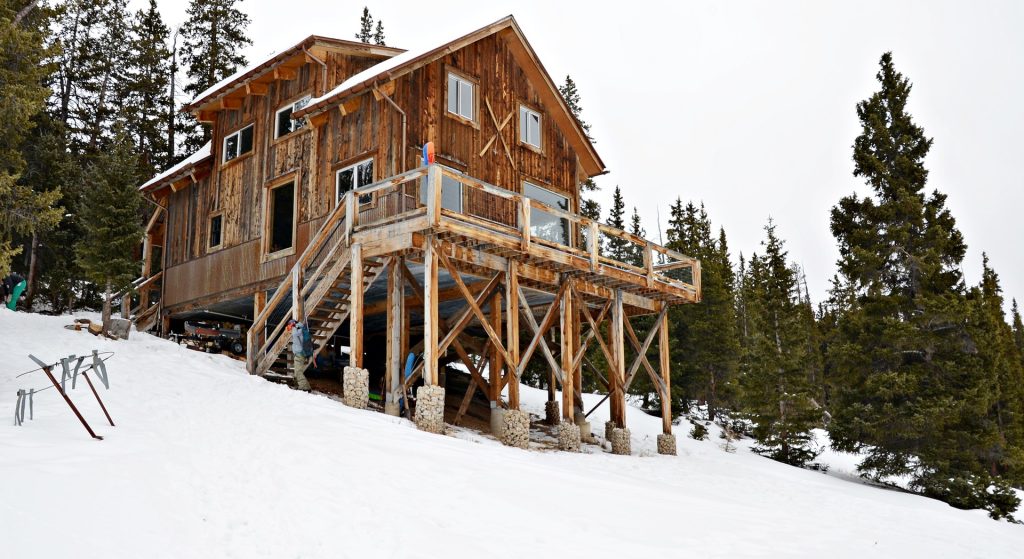
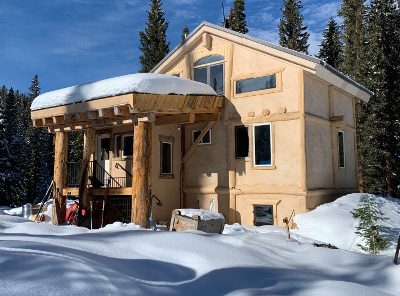
2. Snowshoe into High Lonesome Hut
Location: Meadow Creek, Grand County
Difficulty: easier
Capacity: 12
Description/Activities: Travel through pine forests and pass creeks using skis, your Nordic gear, or our snowshoes. Great for Introduction to Hut Trips! AIARE Rescue courses, too. This hut boasts a wood stove, firewood, indoor flush toilet, a shower, hot and cold running water, full kitchen, & solar electricity.
3. Learn about backcountry skiing or splitboarding near the North London Mill
Location: Mosquito Pass, near Alma
Difficulty: Easier
Capacity: 6
Description/Activities: Unique historical mine preservation project with recreational and educational uses. Renovated in 2023, the old mill office became NOLO’s first backcountry hut and education venue. It features hot-and-cold running water, shower, flush toilet, and WiFi.
Check activities & availability here.
Learn about the historically significant project’s progress, and donate here.
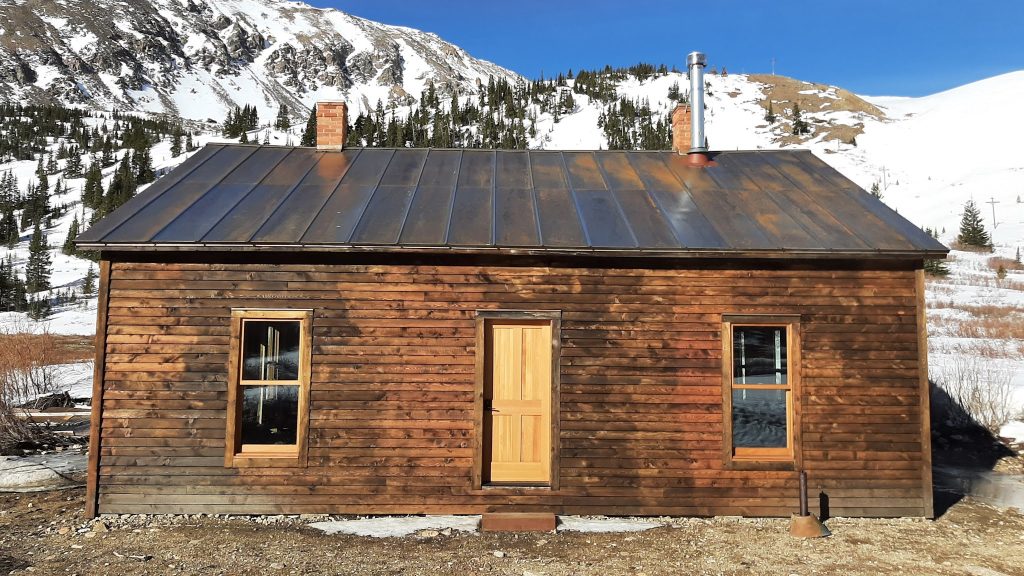

4. Go bold! Try ski or Splitboard mountaineering near Raven’s Nest Hut
Location: Steven’s Gulch, Clear Creek County
Difficulty: Harder
Capacity: 6
Description/Activities: Other options include AIARE Rescue, Intro to huts or backcountry courses, guided touring. Late season AIARE 1&2. Lots of availability. Updated, rustic decor, no electricity, running water or WiFi – a true respite. Meltwater, wood stove heat, kitchen.
5. Ski or ride the backcountry then sauna at Janet’s Cabin
Location: Outside of Copper Mtn.
Access Difficulty: Harder
Capacity: 18
Description/Activities: Built in 1990 by Summit Huts, Janet’s attracts novice and expert skiers for nearby touring. Amenities include an amazing wood-fired sauna year-round, indoor composting toilet, snowmelt water, & solar lights. Guided tours and courses possible include Intro to Huts or Backcountry Ski/Splitboarding, AIARE courses.
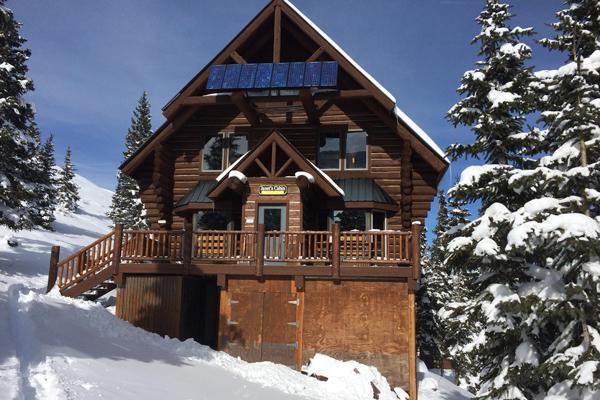

6. Become a hut tripping pro at the Duck Lake Cabins
Location: Guanella Pass
Difficulty: Moderate
Capacity: 6-16 in one or two cabins
Description/Activities:
The original lodge and cabins, known as “Alpendorf on the Lake,” were once the Coors family getaway and a small ski resort. Indoor flush toilet & shower, electricity.
Guided tours and courses possible include Intro to Huts or Backcountry Ski/Splitboarding, late season AIARE courses.
7. Practice avalanche rescues with your backcountry crew at The Sisters Cabin
Location: Webster Gulch, Summit County
Access Difficulty: Harder
Capacity: 12
Description/Activities: Sisters Cabin is winter-only & the newest Summit Huts Division hut. Uses state-of-the-art design and green-building techniques to offer high amenities with low environmental impact. Other adventures: guided skiing and riding, AIARE 1, Intro to Backcountry or Hut Tripping.
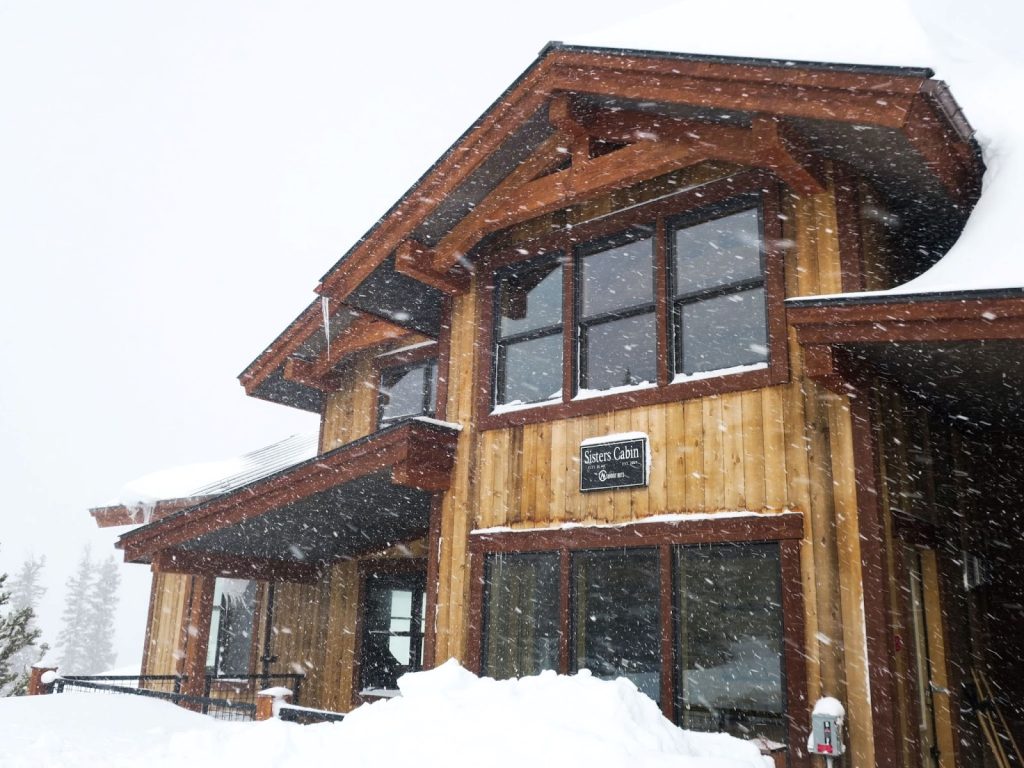

8. Become a Snow Safety Expert! Do AIARE 2 at Broome Hut
Location: Berthoud Pass.
Difficulty: Easier
Capacity: 12
Description/Activities:
A newer hut, with a pellet stove for heat and indoor composting toilet, this hut is easy to operate, with clear instructions posted. A day use area is nearby. Any AIARE or Intro course, winter mountaineering, or ski/split touring are all possible here!
9. Book your whole backcountry crew for a private AIARE 1 at Francie’s Cabin
Location: South of Breckenridge, Summit County
Access Difficulty: Moderate
Capacity: 18
Description/Activities: One of the most popular huts in Colorado, Francie’s is equipped with firewood, propane cooktops, and snowmelt for water. Also possible here: Intro to Backcountry and/or Huts, & AIARE Rescue, touring.
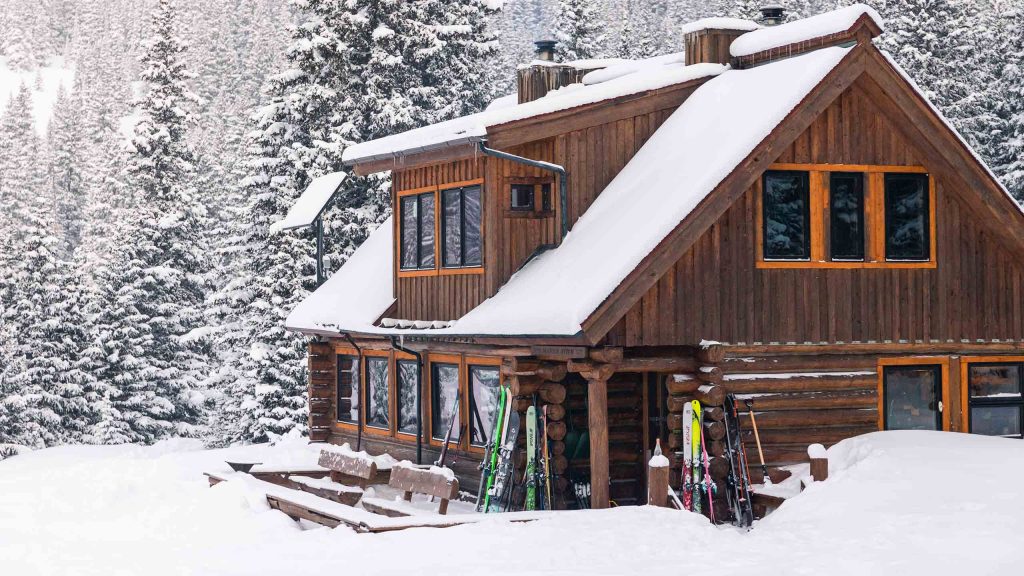
Visit our backcountry huts page to learn more about Colorado’s iconic backcountry cabins!

